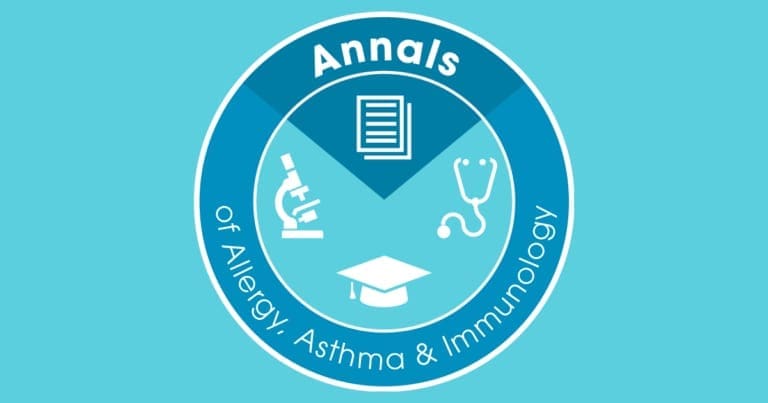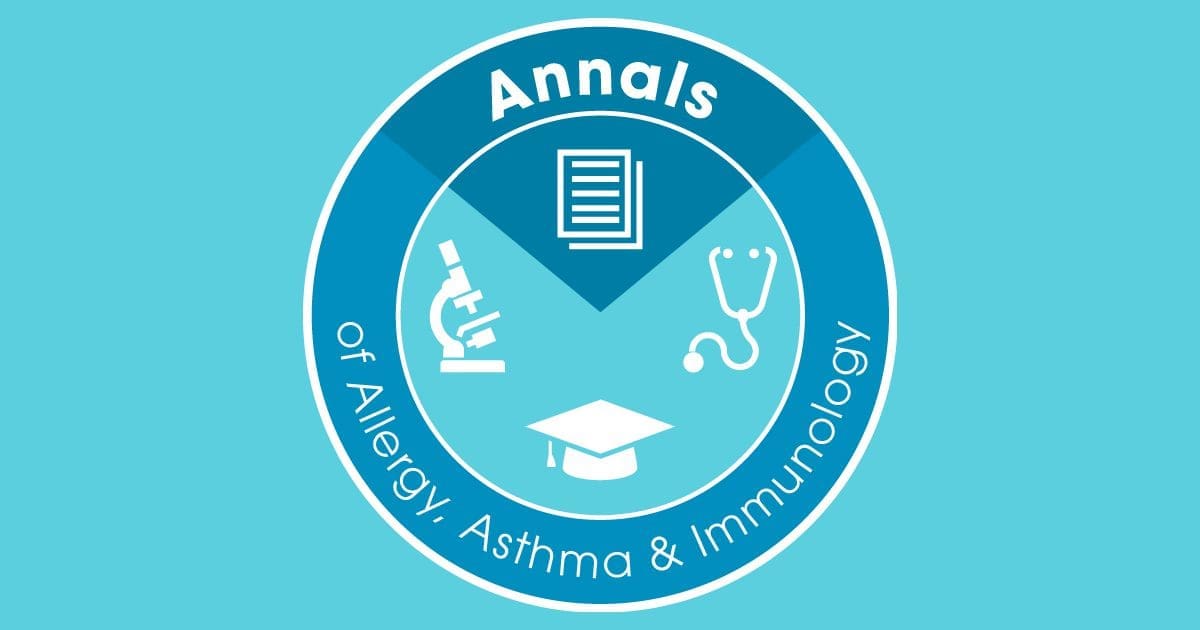The current issue of Annals of Allergy, Asthma & Immunology focuses on asthma and chronic rhinosinusitis. The CME review article by Dr. Michael Miligkos and colleagues examines asthma through the ages. The article discusses how asthma prevalence has plateaued and there have been improvements in mortality. It explores possible explanations for these trends, including advancements in asthma management strategies and risk factors for asthma development and severity. The review also examines genetic and environmental risk factors for the development of asthma across different age groups.
In a series of articles on chronic rhinosinusitis (CRS), Dr. Xinyi Ma et al. explore the role of rhinovirus, a common asthma trigger, in CRS. Rhinovirus was detected in 30% of both control subjects and patients with CRS. It induces an immune response characterized by lower type 1 interferon and higher type 2 interferon, which affects the type of polyps (fewer eosinophils in rhinovirus-positive polyps compared to rhinovirus-negative polyps). Dr. Asher E. Park et al. studied the role of ciliary beat frequency in CRS endotypes and phenotypes. They found a lower ciliary beat frequency in patients with CRS compared to controls, regardless of CRS type (eosinophilic vs. non-eosinophilic). Li and colleagues examine the role of signaling lymphocytic activation molecule family 8 (SLAMF-8) as a factor in epithelial barrier dysfunction in CRS. They found an increase in SLAMF-8 in macrophages, which correlated with disease severity in non-eosinophilic CRS. They suggest that improving barrier function may enhance CRS treatment, as epithelial barrier dysfunction is seen in many type-2 diseases. These articles also suggest that different treatment options might be needed for eosinophilic and non-eosinophilic CRS.
In a thought-provoking article, Dr. Polat Goktas and Dr. Ebru Damadoglu discuss the role of artificial intelligence (AI) in allergy and immunology. The increasing use of AI in allergy-immunology can be seen in areas such as charting, allergen mapping, patient monitoring, and more. It is a topic to watch for in the future, and its impact is rapidly approaching. The Marginal Zone focuses on the role of artificial intelligence in 2045 (enjoy the perspective).
In the field of immunotherapy, Dr. Bianca Olivieri and colleagues review the combination of biologics and immunotherapy in treatment, with an emphasis on safety and efficacy. Dr. William E. Berger et al. explore a novel method for peanut desensitization through oral mucosal immunotherapy. They found this form of desensitization to be safe and well tolerated but did not study effectiveness in this pilot trial. The accompanying editorial by Dr. Aikaterini Anagnostou and Dr. David R. Stukus outlines the pros and cons of the phase 1 study.
As you read this issue of Annals, we hope you are having a successful spring. As always, if you have any comments, please consider sending correspondence to Annals (email us at annals@ACAAI.org). We are always excited to hear how Annals has helped you improve the lives of your patients!
Jonathan Spergel, MD, PhD, FACAAI
Deputy Editor



